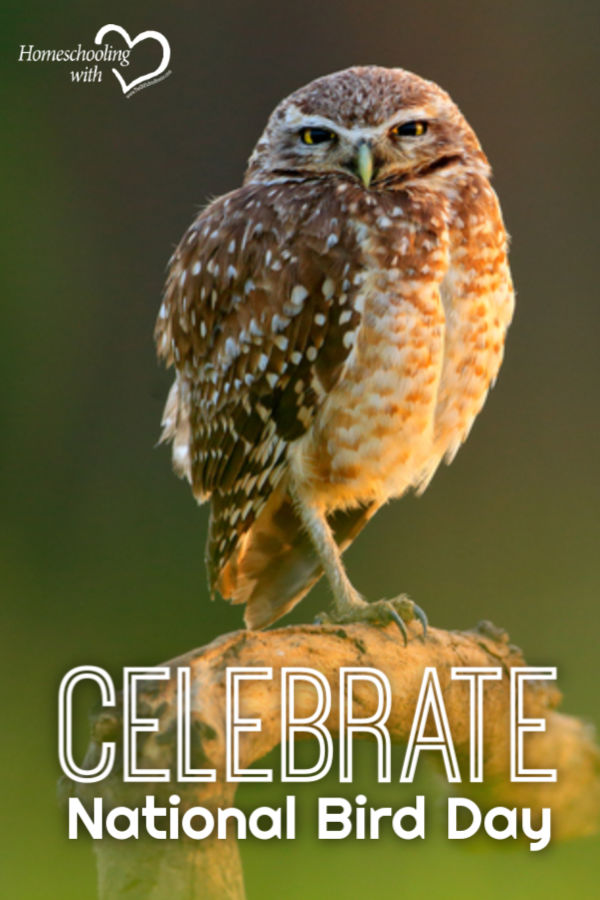Celebrate National Bird Day


National Bird Day was January 5, 2020. You can celebrate birds this month with a mini-study about one of God’s amazing creatures. Here are some ideas to get you started.
First, begin with Scripture. Ask your children if they think that birds are mentioned in the Bible. Then, challenge them to find as many Scripture verses as possible that reference birds. You may need to guide them to look for words like dove, sparrow, fowl, eagle, and raven. A concordance is great for this task. If they don’t find Matthew 6:26 on their own, direct them to it. “Behold the fowls of the air: for they sow not, neither do they reap, nor gather into barns; yet your heavenly Father feedeth them. Are ye not much better than they?” Discuss what this verse means and then pray together, thanking the Lord for His provision.
Next, discuss the needs of birds. What needs do birds have that are like our own needs? Compare and contrast the needs of birds kept as pets with those of wild birds. You can also discuss the needs of poultry. A nice way to visualize how the birds’ needs overlap is to make a Venn diagram. The main overlapping section should include food, water, nesting, and shelter.
Once you have discovered the needs of birds, you can research how God has provided for those needs in nature. What do birds eat? Do all birds eat the same things? Where do they find water? Where do birds build their nests and with what nesting material? Do all birds nest the same way? Do birds like to nest in birdhouses? If so, do all birds use the same type of houses? You may want to research several local bird species and answer the questions for those birds. You can also discuss the needs of migratory birds.
Finally, choose a hands-on activity to complete the study. One idea is to make a bird feeder. You can make this project as elaborate or as simple as you want. A pinecone covered with peanut butter and then rolled in birdseed is an easy feeder to make for young children. Place your bird feeder in a location that allows your family to watch the birds eat from it. As you watch the birds, observe their behavior and characteristics. Do they all act the same way? Do they all look the same? If not, how are they different? You can consult a field guide to help identify the birds. Challenge your children to learn the names of the birds that visit your feeder.
Another project idea is to make a birdhouse. If your children are older, they could construct it with little assistance. For younger children, you could purchase premade houses and paint them together. If you do make birdhouses, discuss the best possible locations for hanging them. If you didn’t already discuss predators in your discussion on the needs of birds, now is a good time to explore this topic. You don’t want to hang your birdhouse in an unsafe location. Speaking of doing things that may be harmful to birds, you may want to include a discussion about human interaction. In what ways do humans negatively impact birds?
Any day is a great day to study birds, and National Bird Day reminds us to celebrate them. Why not take some time to fly away from your everyday curriculum and explore these marvelous wonders with your children? I think you’ll enjoy it and so will your children.
Heidi Kinney is a freelance writer and editor. Her background includes professional teaching in the area of mathematics, as well as writing and editing for several educational publishers. She has been homeschooling her children since 2007. She shares homeschool resources and lessons on her website, SharedLessons.org.













































